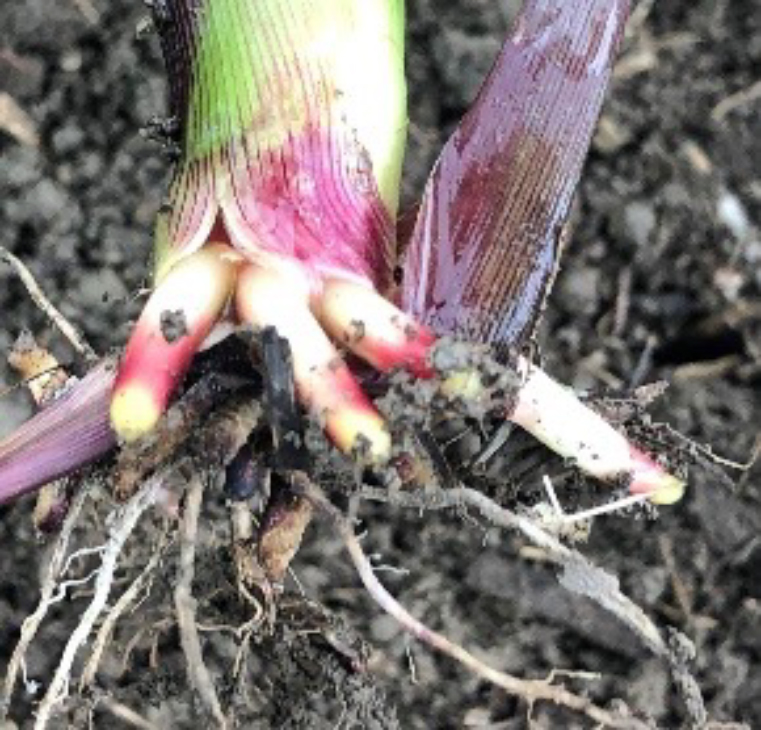This syndrome occurs in young corn plants and is attributed to limited or simply absent development of the nodal roots.
Various factors are involved:
1. Shallow planting
Seed MUST be sown to a MINIMUM depth of 1.5 inches to ensure that nodal roots grow 3/4 inch below the soil surface. Excessive or absent moisture will cause the death of the growth point of the nodal roots. This spring, the very dry conditions, added to the heat of the soil surface led to the burning of the nodal roots’ growing points.
2. Opening of the furrow
The opening of the furrow will promote the desiccation of the area where the nodal roots develop and can cause the death of the root’s growing point. And in the other direction, too much precipitation will "drown" this area and cause the death of the growing point of the developing roots.
3. Presence of a lot of residues in the surface layer.
These residues increase the porosity of the surface area thus promoting its drying, which contributes to "burning" the growing point of young developing nodal roots.


Corn plants affected by this syndrome can recover by producing new nodal roots from other growing points on the upper nodes provided moisture conditions becomes ok. These plants will often be in the form of "goosenecking”, which can be confused with damage caused by corn rootworm.




